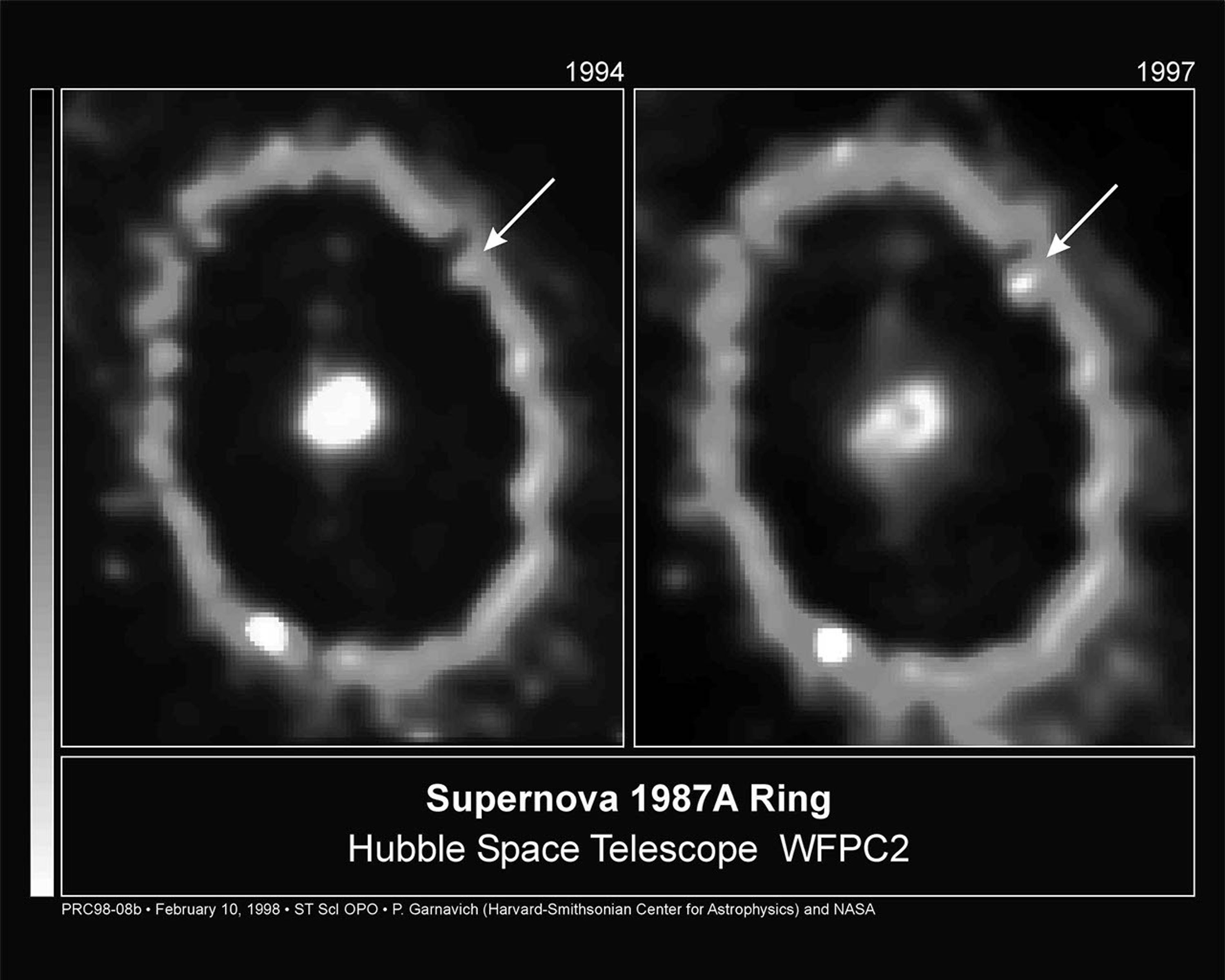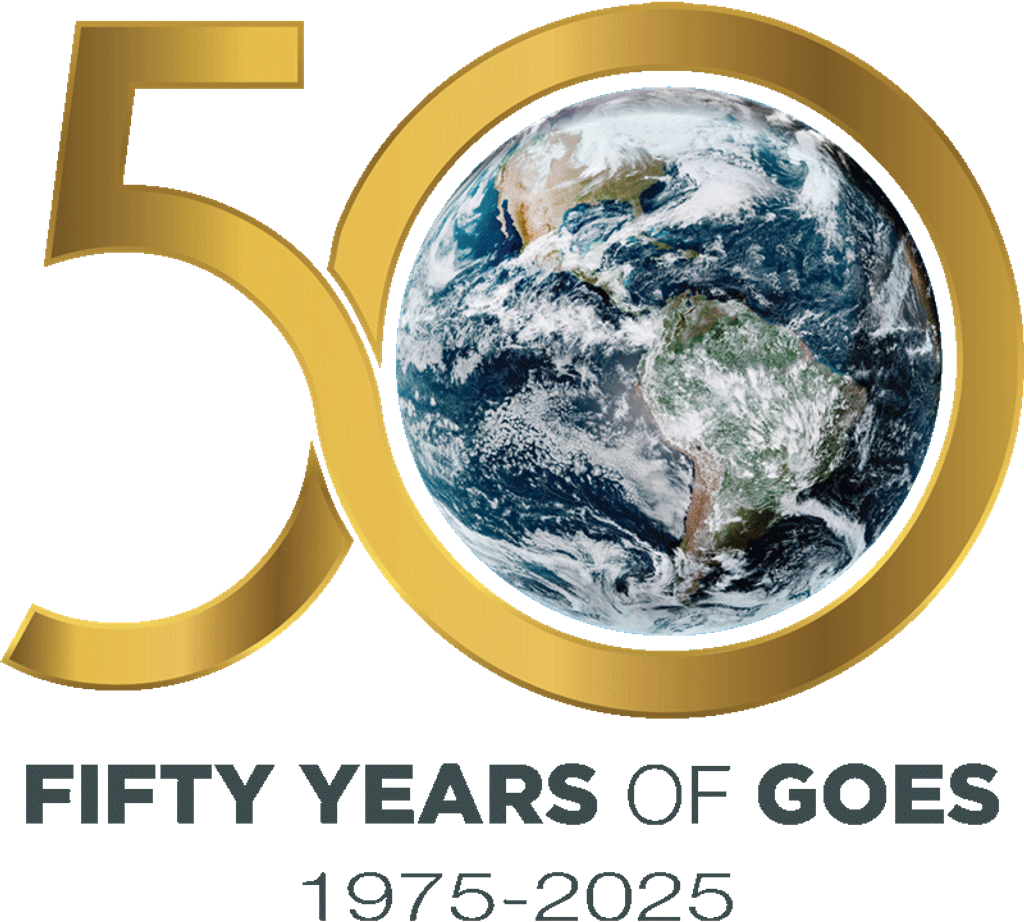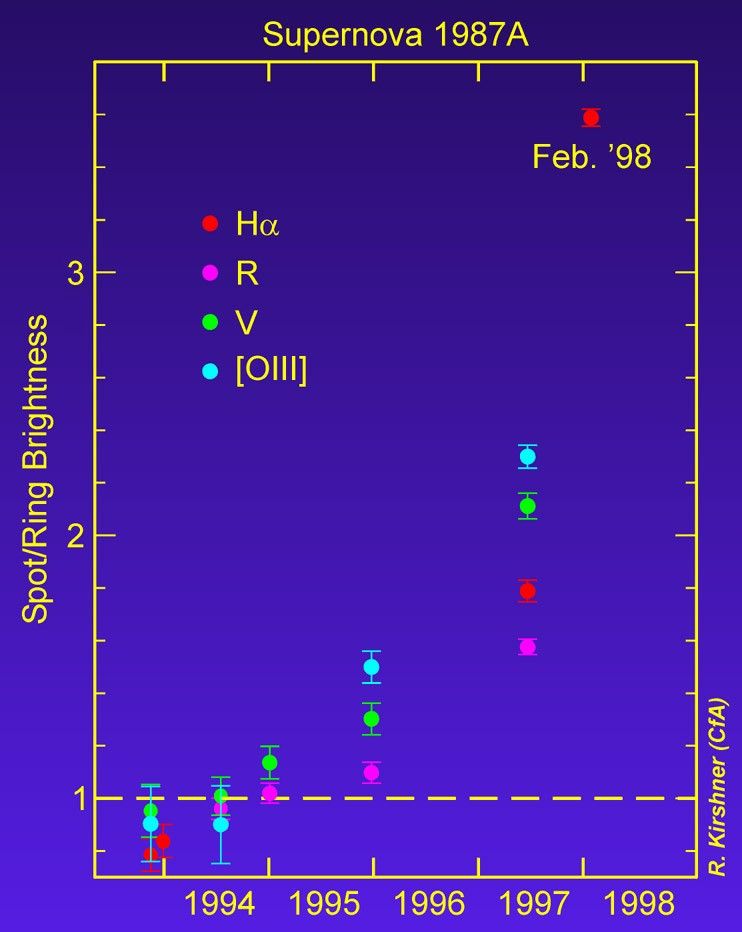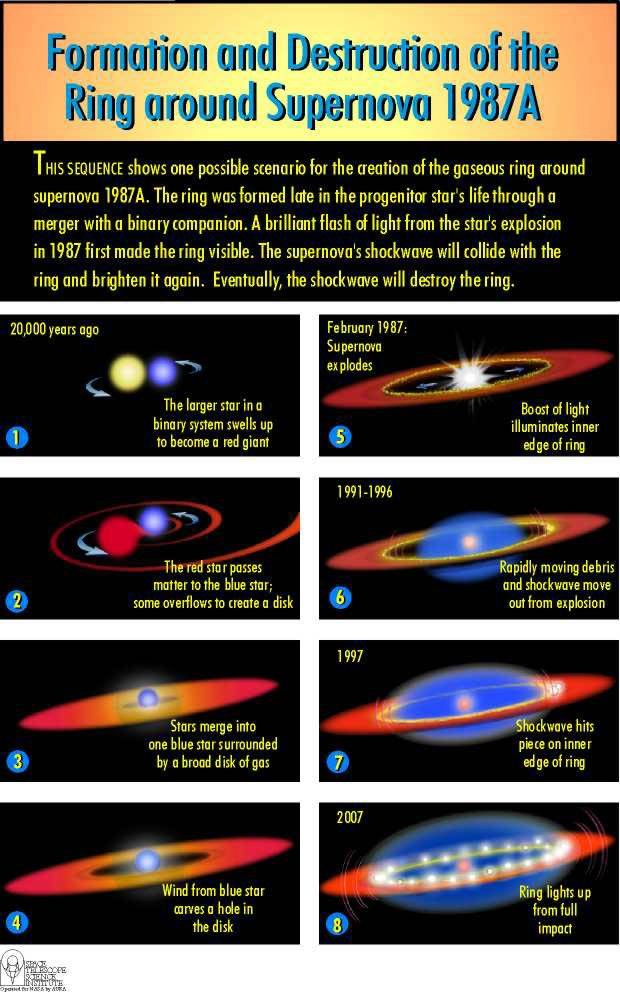1 min read
“Before” (Feb. ’94) image oriented and scaled to match “after”

- Object NameObject NameA name or catalog number that astronomers use to identify an astronomical object.SN 1987A
- Release DateFebruary 10, 1998
- Science ReleaseShock Wave Sheds New Light on Fading Supernova
- CreditCredit: P. Garnavich (Harvard-Smithsonian Center for Astrophysics) and NASA
Related Images & Videos

Bright Knot Appears in Supernova 1987a Ring
[RIGHT] - This NASA Hubble Space Telescope Wide Field and Planetary Camera 2 image shows the glowing gas ring around supernova 1987A, as it appeared in 1994. The gas, excited by light from the explosion, has been fading for a decade. [LEFT] - Recent Hubble telescope observations...

Three Rings of Gas Surround Supernova 1987A
This Hubble Space Telescope image, taken in February 1994 with the Wide Field and Planetary Camera 2, shows the full system of three rings of glowing gas surrounding supernova 1987A. Located in a small galaxy called the Large Magellanic Cloud, the supernova is a massive star...

STIS Discovers High-Speed Gas from Collision Around Supernova 1987a
This image from the Hubble's Space Telescope Imaging Spectrograph (STIS) shows a new and unprecedented look at the light-year wide ring of glowing gas around supernova 1987A, the nearest stellar explosion in 400 years, which occurred in February 1987. The STIS long-slit...

Supernova Explosion
There's an initial flash of light from the supernova explosion causing the ring to glow. Debris hurls into space, the fastest moving at 1/10 the speed of light. The supernova's shockwave causes the ring to glow again. The closer the pieces of the ring are to the shockwave, the...
Share
Details
Claire Andreoli
NASA’s Goddard Space Flight Center
Greenbelt, Maryland
claire.andreoli@nasa.gov



































